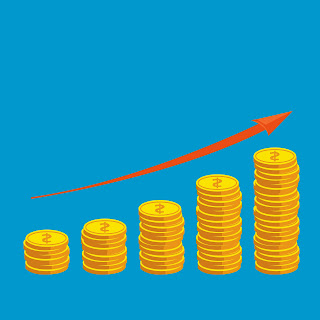Business Bounce Back Loans: Empowering Businesses for Growth
In the wake of economic challenges, businesses often require financial support to sustain and thrive. One such avenue for assistance is through business bounce back loans. These loans have emerged as a lifeline for entrepreneurs seeking to navigate turbulent times and propel their ventures forward. This article delves into the intricacies of bounce back loans, elucidating their significance, application process, benefits, and more.
Understanding the Purpose of Bounce Back Loans
Bounce back loans are specifically designed to provide rapid financial aid to small and medium-sized enterprises (SMEs) facing adversity. The primary objective is to facilitate business continuity, enabling entrepreneurs to overcome immediate cash flow issues, invest in growth opportunities, and safeguard jobs.
Eligibility Criteria for Bounce Back Loans
To qualify for bounce back loans, businesses must meet certain eligibility criteria. Typically, these loans are available to SMEs operating in various sectors, including retail, hospitality, manufacturing, and services. Key requisites often include:
- Registered businesses in the applicable jurisdiction
- Demonstrable impact of COVID-19 on business operations
- Adequate repayment capacity as assessed by the lending institution
- Compliance with relevant regulatory requirements
Application Process for Bounce Back Loans
The application process for bounce back loans is streamlined to expedite disbursement and alleviate financial strain. Entrepreneurs can typically apply online through approved lenders, providing essential documentation such as business plans, financial statements, and proof of COVID-19 impact. Unlike traditional loans, bounce back loans entail minimal paperwork and swift approval processes, enabling businesses to access funds promptly.
Benefits of Bounce Back Loans
Bounce back loans offer several compelling advantages for SMEs:
- Quick Access to Funds: Expedited approval and disbursement ensure timely access to much-needed capital.
- Flexible Repayment Terms: Favorable repayment terms, including low-interest rates and extended grace periods, ease financial burden.
- Support for Growth Initiatives: Funds can be utilized to invest in expansion, innovation, and diversification, fostering long-term sustainability.
- Preservation of Jobs: By addressing cash flow challenges, bounce back loans help safeguard employment opportunities within the business.
- Enhanced Resilience: Strengthening financial resilience enables businesses to weather future uncertainties and emerge stronger.
Repayment Terms and Conditions
While bounce back loans offer flexibility, it is essential for borrowers to understand the repayment obligations. Repayment terms typically include:
- Low-interest rates capped by the government
- Repayment holidays and extended repayment periods
- No personal guarantees required for loans up to a certain threshold
- Repayment deferrals in cases of financial hardship
Alternatives to Bounce Back Loans
While bounce back loans provide invaluable support, businesses should explore alternative financing options to diversify their funding sources. These may include grants, venture capital, crowdfunding, and angel investment, each offering unique advantages and considerations.
Tips for Maximizing the Benefits of Bounce Back Loans
To optimize the impact of bounce back loans, businesses can implement the following strategies:
- Develop a robust business plan outlining utilization of loan funds
- Invest in areas with high growth potential and sustainable returns
- Leverage financial management tools to track expenses and monitor cash flow
- Seek guidance from financial advisors and mentors to make informed decisions
Case Studies: Successful Utilization of Bounce Back Loans
Illustrative case studies highlight the transformative impact of bounce back loans on businesses across diverse industries. From revitalizing operations to launching innovative products, these stories underscore the efficacy of strategic financial assistance in driving growth and resilience.
Risks Associated with Bounce Back Loans
While bounce back loans offer significant benefits, entrepreneurs must also be cognizant of potential risks:
- Overreliance on debt financing may strain cash flow and hinder long-term sustainability
- Economic downturns or unforeseen circumstances could affect repayment capacity
- Failure to adhere to repayment obligations may result in adverse credit implications
Common FAQs about Bounce Back Loans
Are bounce back loans suitable for startups?
- Bounce back loans are typically intended for established businesses with a track record of operations. Startups may explore alternative funding options tailored to their needs.
Can bounce back loans be used for personal expenses?
- Bounce back loans are meant for business purposes only and should not be used for personal expenses.
What happens if I am unable to repay the loan?
- In cases of financial hardship, borrowers should communicate with the lender to explore repayment options such as restructuring or deferral.
Are bounce back loans subject to credit checks?
- While credit checks may be conducted as part of the application process, bounce back loans typically do not require extensive credit history or collateral.
Can I apply for multiple bounce back loans for different business ventures?
- Each eligible business entity may apply for only one bounce back loan, subject to lender discretion and assessment.
Conclusion: Empowering Businesses Through Bounce Back Loans
In conclusion, bounce back loans play a pivotal role in supporting the resilience and growth of SMEs amidst economic challenges. By providing timely financial assistance, facilitating business continuity, and fostering innovation, these loans empower entrepreneurs to navigate uncertainties and seize opportunities for sustainable prosperity.




Comments
Post a Comment